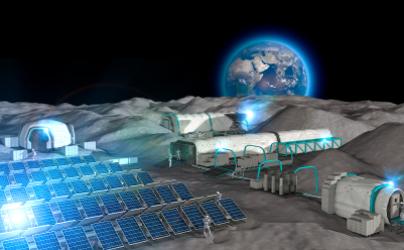OU research into 3D printing on the Moon receives funding

A project, which will develop a payload to send to the Moon to see if the soil is suitable to build on, has received funding.
Led by Dr Sungwoo Lim, Post-Doctoral Research Associate in the OU’s Faculty of Science, Technology, Engineering and Mathematics, the project: Microwave heating Apparatus of Lunar Regolith for Variant Experiments of Lunar ISRU missions has received just over £156,000 from the European Space Agency Off-Earth Manufacturing and Construction Campaign in Open Science Innovation Platform.
Scientific exploration and settlement on the Moon
This 18-month project which started on 1 April 2021 in conjunction with industrial partners, Added Value Solutions UK Ltd and VIPER RF, will continue Dr Lim’s research into developing a 3D printing technique to build houses and infrastructure on the Moon to support long-term scientific exploration and settlement. It is based on the hypothesis that a microwave heating method could make lunar soil as a construction material and extract valuable resources like oxygen, water, and iron.

The new funding will make it possible to develop detailed components of the Microwave Heating Demonstrator (MHD) payload and seek follow-up project opportunities to build a prototype and flight unit ready for a mission.
Understanding more about material on the Moon
Dr Lim said: “This project is very important because the data from the MHD payload will allow us to develop a microwave heating-based 3D Printing platform and contribute new knowledge to the lunar science field because we can understand more about the lunar material through the experiment.
“This is just a first step for the development, but the potential impact is enormous because we can utilise this microwave heating-based 3D printing technique for construction and mining in other planetary bodies, asteroids and also on Earth. For example, we may need to look for alternative living space, e.g., desert, undersea and Antarctic environment, if the current high-density population continues. We will also need to improve living standards in the developing world using appropriate technology. So, I believe that our development could be a good solution for such applications.
“If everything goes well, then we hope to send our payload on the Moon surface by 2027~2029 when ESA launches their European Large Logistic Lander (EL3) mission.”
Related content
Contact our news team
For all out of hours enquiries, please telephone +44 (0)7901 515891
Contact detailsNews & articles

OU gets £106k from UKRI for a project to assess AI-enhanced grant peer review
The Open University has secured £106,078 in funding to lead a new research project exploring how AI and large language models can transform the peer review process for research grants.